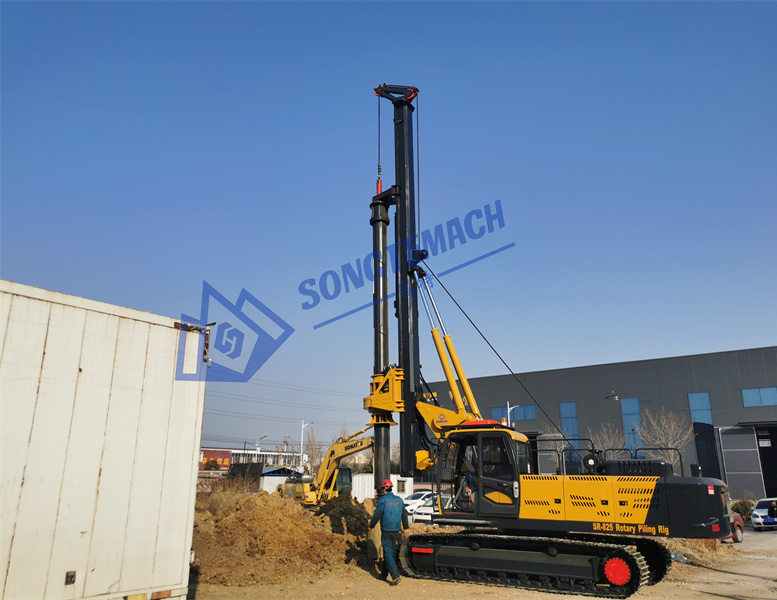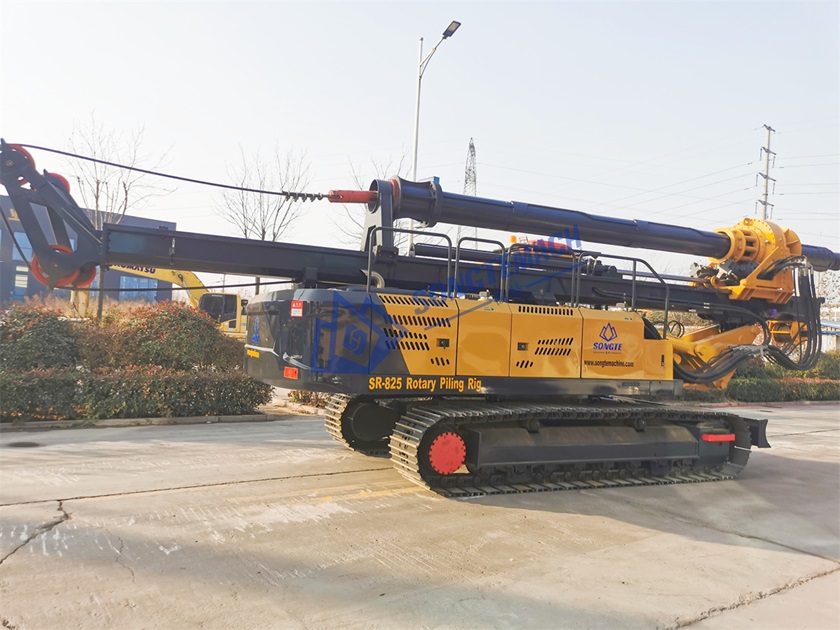مبدأ عمل جهاز حفر الخوازيق الدوارة في بناء أساس الخوازيق
تجريدي
يلعب جهاز حفر الخوازيق الدوارة دورا مهما في البناء الحديث, خاصة في مشاريع أساسات الخوازيق مثل أكوام الركائز المصبوبة في المكان. هذه الحفارات متعددة الاستخدامات وفعالة, قادرة على العمل في ظل ظروف جيولوجية مختلفة. تستكشف هذه المقالة مبدأ عمل منصات الحفر الدوارة, تفصيل مكوناتها, الآليات التشغيلية, وأنواع بناء أساسات الخوازيق التي يدعمونها.
مقدمة عن جهاز حفر الخوازيق
تعتبر منصات الحفر الدوارة ضرورية في مجال الهندسة المدنية, خاصة لبناء أساسات الوبر. تستخدم على نطاق واسع في البناء البلدي, الطرق السريعه, الكباري, والمباني الشاهقة. تهدف هذه المقالة إلى تقديم نظرة عامة شاملة على مبادئ العمل الكامنة وراء هذه الحفارات, التأكيد على تطبيقها في بناء الخوازيق المصبوبة في المكان وطرق أساس الخوازيق الأخرى.
مكونات جهاز حفر الركائز الدوارة
هيكل جهاز الحفر
- الناقل الأساسي: عادة ما تكون قاعدة زاحفة أو مثبتة على شاحنة توفر الاستقرار والتنقل.
- سارية: هيكل عمودي يدعم جهاز الحفر ومحاذاة سلسلة الحفر.
- محرك دوار: وحدة آلية توفر قوة دوران لسلسلة الحفر وأدوات الحفر المرفقة.
- كيلي بار: أنبوب فولاذي تلسكوبي ينقل القوى الدورانية والرأسية إلى أداة الحفر.
- أداة الحفر: يتم استخدام أنواع مختلفة حسب ظروف الأرض, بما في ذلك المثاقب القصيرة, دلاء دوارة, والبراميل الأساسية.
الأنظمة المساعدة
- النظام الهيدروليكي: يدعم حركة الصاري وتشغيله, محرك دوار, ومكونات أخرى.
- نظام التحكم: يدير تشغيل الحفارة, غالبا مع أدوات تحكم إلكترونية متقدمة للدقة.
- نظام التبريد: يضمن عدم ارتفاع درجة حرارة السوائل الهيدروليكية والمكونات الأخرى أثناء التشغيل.
آلية التشغيل
عملية حفر تلاعب الأساسات
- الإعداد والمحاذاة: يتم وضع الحفارة في موقع الحفر, ويتم محاذاة الصاري عموديا.
- اختيار الأداة: اعتمادا على التربة أو ظروف الصخور, يتم اختيار أداة الحفر المناسبة.
- عمليات الحفر: يقوم المحرك الدوار بتدوير شريط كيلي وأداة الحفر المرفقة. تقطع الأداة التربة أو الصخور, إنشاء بئر.
- الحفر الجاف: تستخدم المثاقب القصيرة للتربة المتماسكة.
- الحفر الرطب: تستخدم الدلاء الدوارة في التربة الحاملة للماء أو الرخوة.
- حفر الصخور: تستخدم البراميل الأساسية للحفر من خلال طبقات الصخور الصلبة.
- إزالة الغنائم: يتم إحضار القصاصات إلى السطح من خلال العمل الدوار لأداة الحفر وإزالتها من البئر.
تقنيات الحفر
- اوجير الطيران المستمر (فرنك): تستخدم لإنشاء أكوام الأساس العميقة دون الحاجة إلى إزالة المثقاب حتى يتم تشكيل الوبر.
- كيلي للحفر: يتم تمديد قضيب كيلي وسحبه لتحقيق أعماق حفر أعمق, تستخدم عادة لأكوام ذات قطر أكبر.
وضع الخرسانة
في بناء الوبر المصبوب في المكان, بمجرد حفر البئر إلى العمق المطلوب, يتم وضع قفص التسليح, ويتم صب الخرسانة مباشرة في البئر, تشكيل كومة صلبة في الموقع.
آلة خوازيق دوارة هيدروليكية للأكوام بالملل 25 م SR-825

أنواع بناء أساس الوبر
أكوام المصبوب في المكان
- أسلوب: يتم حفر البئر إلى العمق المطلوب, يتم إدخال قفص تقوية فولاذي, ويتم صب الخرسانة في مكانها.
- مزايا: يوفر قوة, أكوام حاملة مع ترابط ممتاز للتربة المحيطة.
أكوام مسبقة الصب
- أسلوب: يتم دفع أكوام الخرسانة مسبقة الصب في الأرض باستخدام جهاز الحفر الدوار كأداة مساعدة.
- مزايا: يقلل من وقت البناء ويوفر تحكما عالي الجودة في إنتاج الركائز.
تطبيقات جهاز حفر الركائز
تستخدم منصات الحفر الدوارة في سيناريوهات البناء المختلفة, منها:
- التنمية الحضرية: للمباني الشاهقة حيث تكون أكوام الأساس العميقة ضرورية.
- مشاريع البنية التحتية: مثل الطرق السريعة والجسور التي تتطلب أساسات مستقرة.
- هياكل الواجهة البحرية: حيث يجب دفع الأكوام من خلال التربة الناعمة والطبقات الحاملة للماء.
خاتمة
جهاز حفر الخوازيق الدوارة هي أدوات لا غنى عنها في البناء الحديث, توفير التنوع والكفاءة اللازمين لمشاريع أساسات الخوازيق المختلفة. فهم مبادئ عملهم, مكونات, والآليات التشغيلية ضرورية لتحسين استخدامها في الظروف الجيولوجية المختلفة. مع تقدم التكنولوجيا, ستستمر هذه الحفارات في التطور, توفر دقة وقدرة أكبر في هندسة الأساسات.
مراجع
- توملينسون, إم جي, & وودوارد, J. (2015). تصميم الركائز وممارسة البناء. مطبعة CRC.
- سيرنيكا, ج.. (1994). الهندسة الجيوتقنية: تصميم الأساس. جون وايلي & أبناء.
- بولز, ج.إ. (1996). تحليل وتصميم الأساس. ماكجرو هيل.
- مواصفات جهاز الحفر الدوراني Songte ودليل التشغيل.
المزيد من الروابط:
كيف تعمل آلة الخوازيق الدوارة, فيديو هنا!
الشركة المصنعة لآلة الخوازيق, المزيد من نماذج منصات الحفر الدوارة
 سونغتيمان
سونغتيمان

